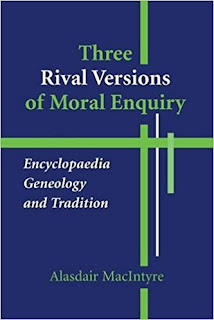I have already suggested in my definition of pedagogy in earlier posts that one's standpoint matters. My definition of education is as follows:
Education is the whole of life of a community, and the experience of its members learning to live this life, from the standpoint of a specific end goal.
Some readers will be saying, "At last he's got to worldview". And yes, I have to some extent, but in my book I try to challenge some inherent problems I have when Christians say things like, "Worldview is the key". Or perhaps, "Christian education needs to challenge young people about the values they hold, or display in their lives". Then again, others might say "I think we need to train our students in basic Christian virtues". Such arguments assume that each in their own way will help us to define an education that is authentic and which we can call 'Christian'.
While I want to affirm that worldview, values and human virtues are important, and related to what we call might Christian education, none of them are in my view the defining keys to authentic Christian education. I argue throughout my book that it is within varied communities of practice that habits, views, priorities and hopes are defined. In short, what our students come to value most is largely defined by their goals, hopes - and as James Smith argues - loves. It is within these broad categories that we will find the foundation of the standpoint from which they sift and sort their lives. It is here that the priorities, views and yes, even values, of their world are shaped.
Craig Dykstra in his book 'Growing in the Life of Faith' helps us here, as he writes:
"Beneath the level of norms, roles, institutional structures, rituals, stories, and symbols lies the level of our fundamental communal intentions toward one another and the world, which govern how we live in our roles and rituals and by means of which we apprehend the mystery of our existence."
(Dykstra, Growing in the Life of Faith, 1999)
Our children are immersed in a web of relationships and simultaneously are members of varied communities of practice. These include some that exist at school, which might cut across classes, year levels, interest groups, social and friendship groups. As well, they might be face-to-face, or virtual, being sustained by social media and constant virtual communication. Our students move in and out of these groups on almost minute to minute basis. What teachers observe and the way they engage with their students, offers access only to the veritable tip of the iceberg of the communities of practice that our students inhabit.
Against social a complex social existence, the task of the teacher in trying to influence the 'standpoint' from which our students view the world is a very difficult one.
What I suggest in 'Pedagogy and Education for Life' is that the key in having any impact on our students world is the extent to which we are:
- aware of the varied communities of practice our students inhabit;
- able to have an impact on their views of the world through our teaching, curriculum and pedagogy;
- attentive to the conversations of our classrooms and the cultural practices evident in their words and actions;
- engaged and in some way, intersecting with their world.
A challenge
If you are a teacher or parent try to estimate how many networks or relationships your children are engaged in each day. Then ask yourself these questions:
1. In how many would I see myself as a member?
2. In ways, and through what avenues, do members reinforce belonging?
3. Are there specific behaviours that members demonstrate?
4. Are you aware of any views of the world that they might value, demonstrate, reinforce?
5. What are the things that sustain group coherence and purpose?
I will return to this topic in a future post.
Next Post: Formation





